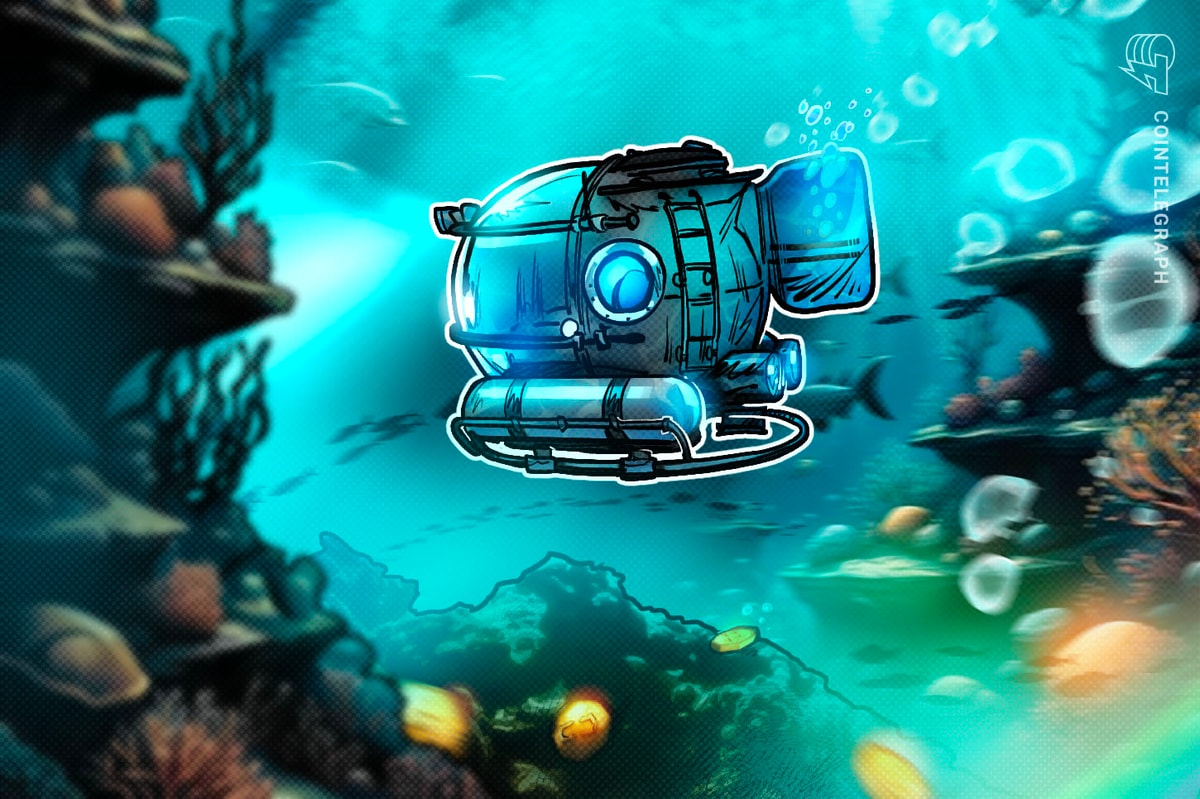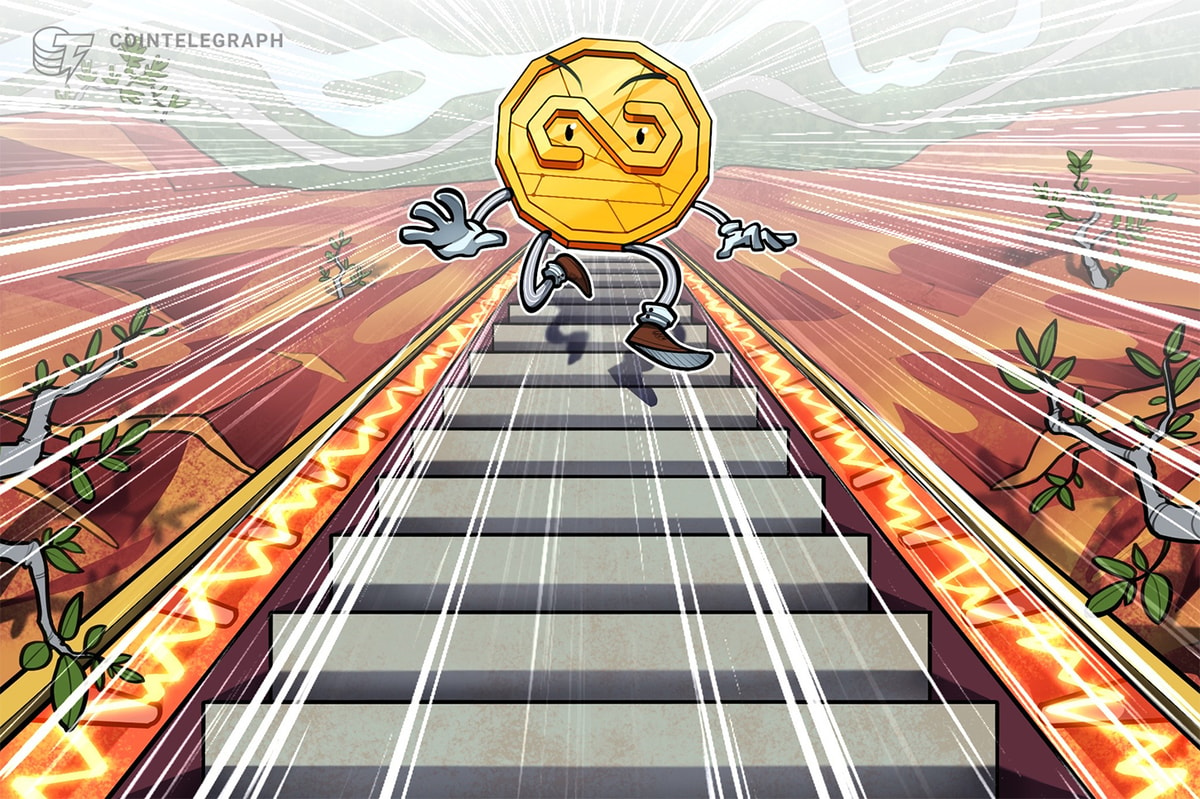Mass adoption of blockchain technology will likely hinge on the industry’s ability to achieve interoperability. Cross-chain is the future, as moving data and value across networks is the only way to ensure greater versatility, utility and broader participation.
Blockchain interoperability refers to the ability of two independent networks to communicate with one another without friction. At present, this isn’t easy. You can’t send Bitcoin to an Ethereum wallet for example, or at least not without massive complexity. By enabling frictionless interoperability, we can unlock much greater value. The interconnectedness of blockchains can be likened to the global economy. In the modern world, nation states have all but eliminated protectionism, enabling the flow of goods, services, information, money and people across borders, and it has resulted in numerous benefits for mankind.
The free flow of information across blockchains will lead to similar benefits. If digital assets are portable, their utility will increase, with some of the most obvious use cases being cross-chain token transfers, smart contract calls and arbitrage.
For now, blockchain interoperability is still a work in progress, but there are numerous projects working hard to make it a reality.
Polkadot
Interoperability is the name of the game for Polkadot, which has built an entire ecosystem of blockchains that can easily talk to each other. Polkadot itself serves as the central network, called the Relay Chain, that ties together numerous so-called “parachains” that are built to host different projects and dApps.
With Polkadot, developers can easily create their own network using the Substrate framework, and then customize their parachains for a particular application. Already, there are more than 20 parachains up and running on Polkadot, including Acala, Moonbeam, Parallel Finance, Clover and Centrifuge. These projects all have their own, customized blockchain that’s geared to provide the best performance for their applications. At the same time though, they’re all connected to the Polkadot Relay Chain, where transactions are ultimately settled. This ensures rapid transaction processing speeds and enhanced security. Moreover, because each parachain shares the same architecture, cross-chain interoperability between them is assured. Users can easily send funds from one parachain to another, without any friction.
This focus on interoperability ensures that Manta Network can offer its transaction privacy layer across Polkadot’s entire ecosystem of parachains. Manta has created software that’s able to obfuscate crypto wallet addresses on Layer-1 blockchains through the use of zkSnarks, which employ cryptography to enable two entities to verify information without sharing any data. It can do this for transactions on any parachain, as well as inter-parachain transactions. In addition, thanks to its partnership with Axelar, it can also extend transaction privacy to other top-level chains including Avalanche, Ethereum and Polygon.
Another aspect of Polkadot’s ecosystem is Kusama, which serves as its canary network. Kusama is virtually identical to Polkadot, with its own Relay Chain and parachains, and enables developers to test new features and ideas before migrating them to a more stable network. Recently, KILT Protocol completed the first-ever migration from Kusama to Polkadot. KILT leverages Kusama’s fast iteration cycle to rapidly build out its decentralized identity services. After building up a strong enterprise user-base, KILT decided the time was right to migrate to a more stable network, just 11 months after its launch. This wouldn’t have been possible without Polkadot’s strong focus on interoperability.
AllianceBlock
The decentralized finance space stands to benefit immensely from better interoperability, as it will give users the freedom to quickly and easily move their assets across chains, creating more flexible trading opportunities. So it makes sense that interoperability is a key goal of AllianceBlock, which has built an ecosystem of tools around DeFi. AllianceBlock is a DeFi platform itself, enabling borrowing, lending and staking for example, but it has also created additional tools around identity verification, cross-border regulatory compliance and NFTs.
AllianceBlock wants to open DeFi to more institutional investment and so it sees interoperability as an essential capability. That’s why it created the AllianceBlock Bridge, billed as a fast, secure and decentralized solution for cross-chain asset transfers.
AllianceBlock Bridge supports multiple key networks including Ethereum, Avalanche, Binance, Arbitrum, Polygon, Optimism and Energy Web, among others. One of its biggest advantages is decentralization. Many blockchain bridges are more centralized, relying on a single, or perhaps just a handful of entities to verify cross-chain transactions. With AllianceBlock Bridge however there are multiple validators that operate a cleverly designed consensus mechanism, known as the Hedera Hashgraph Consensus Service, to validate transactions. It has a unique design, where dApps and networks can submit messages to the Hedera public ledger, enabling AllianceBlock Bridge to reach consensus without needing to keep all validators in sync, resulting in a significant performance boost.
Like other cross-chain bridges, AllianceBlock Bridge relies on the concept of “wrapped tokens”. So, someone who wishes to send ETH to a user on Avalanche would lock their tokens into a smart contract. That smart contract would then generate “wrapped ETH” on the Avalanche blockchain. These tokens will continue to exist on Avalanche, where they can be freely traded, until such a time as whoever owns them decides to redeem them on Ethereum again. Then, the wrapped ETH will be burned – scrubbed out of existence – in order to unlock the original ETH tokens on the Ethereum blockchain.
Due to its high security and fast performance, AllianceBlock Bridge is a key enabling technology of the Fundrs platform, which enables crypto projects to obtain crowdsourced funding from the wider AllianceBlock community. Fundrs provides an alternative to traditional venture capital. Instead, decentralized projects can seek funding from their users, issuing them digital assets in return for their backing. AllianceBlock Bridge makes it possible for projects on Fundrs to receive funding from multiple sources, meaning they become more widely accessible to would-be investors.
Cronos
Cronos loudly proclaims that it’s one of the most interconnected blockchains of all and it’s hard not to argue with that. Cronos is a Layer-1 infrastructure network that seeks to rival Ethereum and others, and is home to its own ecosystems of blockchain-based games, DeFi applications and NFTs.
The Cronos blockchain is based on Ethermint, a scalable, high-throughput blockchain framework that’s fully compatible with Ethereum and other EVM-compatible chains, allowing for the easy porting of Ethereum-based applications. At the same time, Cronos also supports the Inter-Blockchain Communication standard that’s based on the Cosmos SDK. IBC has emerged as one of the most popular standards for blockchain interoperability and is supported by numerous projects, including Terra, Cosmos Hub, Akash, Crypto.org, Osmosis and Juno.
It’s notable that Cronos is the only blockchain in the industry that’s compatible with both EVM and Cosmos-based blockchains, giving it a distinct advantage in terms of its interconnectedness. What this means is that dApps built on Cronos have the unique advantage of being able to tap the huge amount of liquidity on Ethereum, while also interacting with the fast-growing Cosmos community. Users can therefore take any asset created on an EVM or IBC compatible network, and use it to trade, swap, borrow, lend, vote or stake via a Cronos-based dApp.
Cronos doesn’t stop there either, for it also supports an interoperability function called Interchain Accounts, which make it possible for Cronos accounts to control those on other, IBC-compatible blockchains. In addition, Cronos is also working on a mechanism that will enable it to support NFT transfers across IBC-compatible chains, as well as the interaction with smart contract proxies.
Flare Network
Flare is building a Layer-1 blockchain network with the primary ambition being to connect everything – not only other decentralized networks, but also traditional networks. In other words, it’s building the ultimate interoperability blockchain, connecting every kind of network.
How does it do this? Well, Flare has created two separate tools, the Flare State Connector and Flare Time Series Oracle (FTSO). The State Connector is unique in its ability to prove the state of any open blockchain system in a secure and decentralized way, enabling dApps to connect to any kind of data source. It can even tap non-smart contract tokens such as Bitcoin and XRP, allowing those assets to interact with Ethereum smart contracts, for example.
Flare’s State Connector does this without requiring any trust except from the validators of the chain it queries, and without modifying any code on the integrated chain. In addition to being able to trustlessly read any blockchain’s transactions, State Connector will in the future be able to read any deterministic real-world data source and prove its outcome to any smart contract.
This leads to some interesting possibilities. For instance, DeFi apps potentially can be fed information about the real world and execute their smart contracts based on this, without any intermediary. For example, a decentralized insurance app can automatically pay compensation to farmers based on the extreme weather reports it receives. Alternatively, dApps can tap into data such as the current price of oil or gold, or the result of a sports match, and execute smart contracts accordingly.
Flare’s FTSO meanwhile is a decentralized smart contract that taps independent data providers to deliver continuous estimates of cryptocurrency price pairs. The data providers retrieve their information from third-party sources, earning rewards for doing so, and once the data has been verified it can be published onto any chain. In this way, accurate price information can quickly be made available on any blockchain.
Flare’s technology is already being used to underpin the Metropolis World metaverse. Metropolis is creating an ecosystem of virtual cities, and Flare’s State Connector and FTSO will be used to facilitate the seamless flow of data between them.
Quant
Quant is one of the oldest interoperability projects in crypto, having launched back in 2018 with the goal of connecting the world’s decentralized networks. It relies on a technology called the Overledger DLT Gateway, and is able to seamlessly connect decentralized networks regardless of what kind of ledger tech they use, be it blockchain, DAG or some other protocol.
Quant’s Overledger Enterprise Platform is billed as a kind of “DLT gateway” and it’s aimed at serious enterprises. It provides a simple API-based gateway that allows developers to access multiple distributed ledgers, so they can connect pre-existing infrastructure or apps to various blockchains. The platform’s simple REST API ensures there is a standard way for developers to interface with different blockchains.
Using Quant’s APIs, developers can create “multi-DLT smart contracts”, otherwise known as MAPPs that can run on multiple blockchains simultaneously.
MAPPs are essentially just smart contracts that exist on more than one blockchain. As such, the dApps that use them can leverage the data and capabilities of numerous blockchains at the same time, providing functionality that isn’t possible for apps hosted on just a single blockchain. Quant also provides support for what it calls “multi-ledger tokens”, which are digital assets that can move across blockchains, backed by funds held in escrow with a financial institution. In this way, MLTs can be used as stablecoins, central bank currencies, loyalty tokens, vouchers and more.
Quant has extensive support for many of the most prominent blockchains, including Bitcoin, Ethereum, EOS, IOTA, Polygon, Ripple, Stellar, as well as the Hyperledger Fabric Blockchain. Moreover, it can connect other kinds of applications, including centralized databases and CRM systems, for example.
Quant works well but it may not be for everyone. The project is not built on open-source technology but proprietary software, meaning that users must pay a license fee to take advantage of it. Quant is also heavily centralized, requiring trust in the company that operates its services.
Read More: www.newsbtc.com









 Bitcoin
Bitcoin  Ethereum
Ethereum  Tether
Tether  XRP
XRP  Solana
Solana  USDC
USDC  Dogecoin
Dogecoin  Cardano
Cardano  TRON
TRON  Lido Staked Ether
Lido Staked Ether  Wrapped Bitcoin
Wrapped Bitcoin  LEO Token
LEO Token  Chainlink
Chainlink  Toncoin
Toncoin  USDS
USDS  Stellar
Stellar  Wrapped stETH
Wrapped stETH  Avalanche
Avalanche  Sui
Sui  Shiba Inu
Shiba Inu  Hedera
Hedera  Litecoin
Litecoin  Polkadot
Polkadot  MANTRA
MANTRA  Bitcoin Cash
Bitcoin Cash  Bitget Token
Bitget Token  Ethena USDe
Ethena USDe  WETH
WETH  Binance Bridged USDT (BNB Smart Chain)
Binance Bridged USDT (BNB Smart Chain)  Pi Network
Pi Network  Wrapped eETH
Wrapped eETH  Monero
Monero  WhiteBIT Coin
WhiteBIT Coin  Hyperliquid
Hyperliquid  Uniswap
Uniswap  Dai
Dai  OKB
OKB  Pepe
Pepe  sUSDS
sUSDS  NEAR Protocol
NEAR Protocol  Aptos
Aptos  Gate
Gate  Coinbase Wrapped BTC
Coinbase Wrapped BTC  Tokenize Xchange
Tokenize Xchange  Cronos
Cronos  Ondo
Ondo  Mantle
Mantle  Ethereum Classic
Ethereum Classic  Internet Computer
Internet Computer